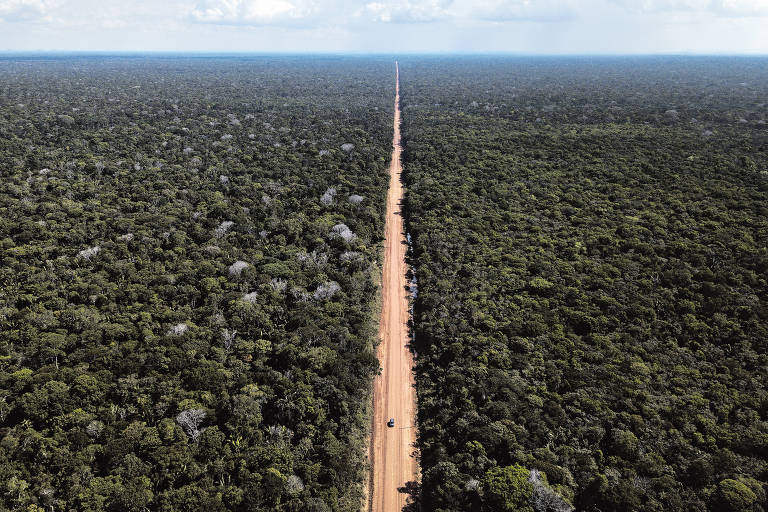Realidade, a dusty village in the state of Amazonas, follows the old cycle of irregular wood harvesting, followed by the land thievery and illegal large-scale logging that typically precedes extensive farming. The difference is that Realidade (in English, Reality) is in the margin of Interstate BR-319, a road that once paved, might spread this same chaotic occupation pattern to a rainforest area larger than Germany.
Inaugurated in 1976, BR-319 is almost 900 km (560 miles) long and is the only connection by land of Manaus, the state capital, with the rest of Brazil, through Porto Velho, in the state of Rondônia. Against the custom, it started out as a paved road, but lack of proper maintenance made it lose all paving and become impassable in 1988.
In 1996, the federal government put the road again in the list of priorities. Since then, the repaving of stretches closed to state capitals and maintenance works have increased car flow, bringing more people and goods back and forth. But one particular part of the road hasn't been repaved yet, because it lacks proper environmental permits. It's the 406-mile-long (252 miles) "middle stretch".
There is much debate around this environment permit. The largest hindrance is the lack of government presence in the area surrounding the road since once repaved, it would allow the opening of an additional four other roads that have already been planned.
The longest of them, AM-366, with 578 km (360 miles) would cross a national park and indigenous lands. Altogether, the range of BR-319's influence would be equivalent of the areas of Germany and the Netherlands combined, according to a study from Idesam (Institute for Conservation and Sustainable Development of the Amazon).
The lack of government presence was worsened in October 2017, when gold miners burned offices of two government offices in Humaitá, in Amazonas, a municipality where Realidade is located.
"BR-319 is a huge threat to the rainforest because it opens the Brazilian Amazon's surviving half to illegal loggers," says American ecologist Philip Fearnside, from Inpa (Amazon National Institute of Research), in Manaus.
The road's improvement already accounts for Realidade's growth. The village started as an agricultural settlement and now it has 7,000 residents, most of them from neighboring state Rondônia.
Idesam's study of BR-319 social and environmental impact shows that loggers opened 305 km (190 miles) of side roads around Realidade in the last eight years, mainly by loggers. From 2016 to 2017 only, the deforested area increased 17%.
(With Lalo de Almeida)
Translated by NATASHA MADOV
Read the article in the original language
